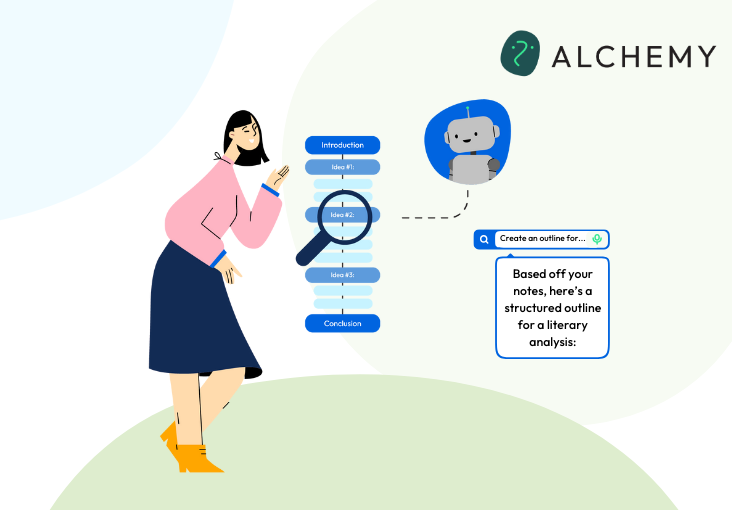Article
Planning with AI: Level 2 of the AI Assessment Scale

The 2024 AI Assessment Scale (AIAS) outlines how AI can support students in the planning and initial stages of their work while ensuring that the final submission is independently developed. This framework consists of five levels, ranging from AI exploration to no AI use. In this fourth installment of our 5-part series, we’ll explore Level 2: AI Planning. This level allows AI to assist in brainstorming and organizing ideas, emphasizing student ownership of the final product.

What is Level 2: AI Planning?
Level 2 focuses on using AI for planning, ideation, and initial research. AI tools can help students generate ideas, create outlines, and structure their projects, but all content in the final submission must be independently developed by the student. This level is particularly beneficial in courses where organizing thoughts and structuring work are key skills.
Snapshots of Level 2 in Action
Example 1: Research Proposal (Sociology, 300-level)
- Assignment: Develop a research proposal on a contemporary social issue.
- AI Use: AI assists in brainstorming research questions and structuring the proposal.
- Constructive Use: AI helps students organize their thoughts and create a coherent research framework.
- Managing AI: Students submit the AI-assisted outline alongside their final proposal. They also include a reflection detailing how the AI helped in planning and how they refined those ideas independently. See full assignment example here.
Example 2: Marketing Plan (Business, 200-level)
- Assignment: Create a marketing plan for a new product launch.
- AI Use: AI tools help in brainstorming target demographics and structuring the plan.
- Constructive Use: AI supports the planning process, allowing students to focus on strategic content development.
- Managing AI: Students submit AI-generated brainstorming notes with a final plan developed independently. A reflective piece discusses how the AI-assisted planning was refined into a coherent strategy. See full assignment example here.
Example 3: Literary Analysis Outline (English Literature, 100-level)
- Assignment: Develop an outline for a literary analysis essay on a selected novel.
- AI Use: AI helps brainstorm themes and organize ideas into a structured outline.
- Constructive Use: AI aids in organizing thoughts, allowing students to focus on deeper literary analysis.
- Managing AI: Students submit the AI-assisted outline along with the final essay, including a reflective commentary on how the AI-assisted planning was translated into their original analysis. See full assignment example here.
Conclusion: Enhancing Structure and Planning Through Reflection
Level 2 of the AIAS leverages AI tools to support the initial stages of planning and organizing academic tasks while ensuring that the final output reflects the student’s independent work. By requiring students to document and reflect on their use of AI in planning, instructors can help students develop both their organizational skills and their ability to independently execute ideas.
In our upcoming and final part of this series, we’ll take a look at Level 1: No AI where students must complete their work without any AI assistance, focusing on their understanding and ability.
In the meantime, feel free to learn more about Level 5: AI Exploration, Level 4: Full AI, and Level 3: AI Collaboration. Explore our growing body of resources on the topic in our “Guide to AI Use in Student Assignments: Practical Strategies & Examples.”



